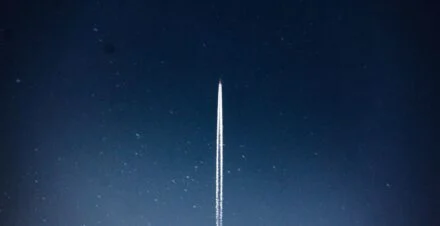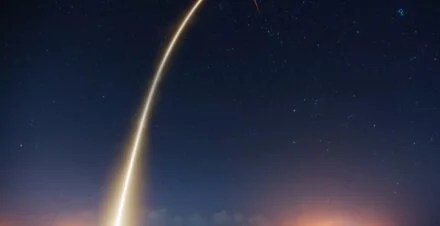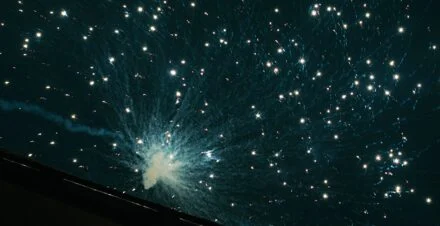Short on time? Listen to this article on-the-go.

Space safety and sustainability are complicated topics, touching on various technical, political, and legal questions. But there’s one question that matters most: how do we keep space clean?
First, we need to understand that there are only two types of human-made objects residing in low Earth orbit: those that serve a current purpose and those that don’t. Those that serve a purpose are operational satellites and spacecraft, such as the International Space Station, earth imaging systems, and communication payloads. Their power’s turned on, they’re transmitting data to their teams on the ground, and they’re fulfilling their intended mission every day.
“There’s far more space junk currently in low Earth orbit than there are operational satellites…we must take special care to maintain a safe operating environment for operational satellites for years and decades to come.”
Then there are the objects still in orbit that no longer serve a purpose. There’s another name for these: space junk. This includes debris fragments, rocket bodies, and defunct satellites. Unfortunately, there’s far more space junk currently in low Earth orbit than there are operational satellites. That means we must take special care to maintain a safe operating environment for operational satellites for years and decades to come. To do that, we must minimize the amount of space junk added to LEO over the long term.
Towards that end, let’s consider three best practices for combating space debris:
• Collision Avoidance
• Debris Mitigation
• Debris Remediation
First up? Collision avoidance.
Collision Avoidance
For a satellite owner-operator, Collision Avoidance means taking an active approach in ensuring their satellites don’t collide with other objects. This is tied to Space Traffic Management, a term you may have heard before. The goal of Space Traffic Management is to ensure that satellites and spacecraft can operate safely in orbit and not collide with other objects. Satellites that are maneuverable can and do fire their thrusters periodically to mitigate the risk of getting hit by other objects in space, especially when they pass within a close range of one another. But these operational satellites only account for a fraction of the total objects in low Earth orbit, which means that STM only addresses a relatively small percentage of the total conjunctions, or “close approaches,” occurring each day. But in LEO, any random object can hit any other random object, so how do we address this risk in the long term?
This is where Space Environment Management comes in, a phrase coined by LeoLabs Senior Technical Fellow Dr. Darren McKnight and ClearSpace CTO Dr. Tim Maclay in a 2019 research paper.
Whereas Space Traffic Management can be thought of as a continuous, daily activity integrated into the operational workflow of satellite owner-operators, Space Environment Management is more preventative and proactive in nature. Think of it this way: Space Traffic Management says, “Avoid that piece of debris today.” While Space Environment Management says, “Let’s keep space clean now to ensure less debris is generated in the future.”
OK, now let’s turn our attention to best practices number 2 and 3. Both of which fall under the umbrella of Space Environment Management.
Debris Mitigation
Debris mitigation means taking proactive steps to prevent the creation of debris later down the road. Examples of this include designing spacecraft with appropriate shielding to mitigate against threats of collisions from small debris. In addition, spacecraft can be designed to prevent systems, such as batteries or fuel tanks, from rupturing. Finally, owner-operators can also make sure their satellites de-orbit soon after their job is done.
Historically, owner-operators were required to de-orbit their satellites a maximum of 25 years after they became non-operational. The US Federal Communications Commission recently changed this de-orbit maximum time to 5 years to more efficiently mitigate the growth of debris in LEO.
Debris Remediation
Debris remediation refers to removing existing debris from orbit to clean the space environment today, which also serves to lessen the chances of collisions in the future. If Debris Mitigation says, “Don’t make a mess,” Debris Remediation says, “Clean up your mess.”
In the realm of possible conjunction events, the category of “junk vs. junk” (or one random defunct object colliding with another) is in fact the most statistically concerning and the most likely to happen next. That reality has led commercial companies, such as ClearSpace and Astroscale, to develop exciting technologies around Active Debris Removal to de-orbit defunct satellites and dangerous rocket bodies.
As the two rules above indicate, although Space Traffic Management and Space Environment Management are separate in premise, they are tightly interconnected. By practicing effective Space Environment Management today, it will make Space Traffic Management that much more efficient and manageable tomorrow. Likewise, Space Traffic Management is itself a form of Space Environment Management, as it’s one of the most effective ways to prevent collisions and the generation of new debris.

A bottle of soda sits on the edge of a table, what do you do?
Let’s summarize with one final analogy. You’re in your living room with a bottle of soda sitting precariously close to the edge of your coffee table. The soda used to serve a purpose: it was a tasty beverage, but you only drank half of it and now it’s a two-day old, flat soda with a fly in it. You sure as heck aren’t going to drink it anymore. And oops, the cap is also off the bottle. Disaster awaits.
This scenario is addressable with actions geared toward Avoidance, Mitigation, and Remediation.
![]() Avoidance says, “I should pay attention so I don’t knock that bottle over, because if I do, it’s going to make a giant mess.”
Avoidance says, “I should pay attention so I don’t knock that bottle over, because if I do, it’s going to make a giant mess.”
![]() Mitigation says, “I better put the cap back on the bottle, so in case I do knock it over, it won’t make a mess.”
Mitigation says, “I better put the cap back on the bottle, so in case I do knock it over, it won’t make a mess.”
![]() Remediation says, “You know what, I was done with this drink two days ago and now it’s just cluttering up my table. Plus, I might accidentally knock it over any minute. I probably should have done this earlier, but I’m finally going to throw it away (or better yet, recycle it).”
Remediation says, “You know what, I was done with this drink two days ago and now it’s just cluttering up my table. Plus, I might accidentally knock it over any minute. I probably should have done this earlier, but I’m finally going to throw it away (or better yet, recycle it).”
“Collision avoidance, debris mitigation, and debris remediation are our way of avoiding the ultimate bad outcome in space: creating an environment that doesn’t allow for the safe operation of satellites, which have become essential for a thriving space economy.”
All three actions are aimed at avoiding the ultimate bad outcome — knocking that bottle over and spilling soda on your beautiful white carpet, leaving a permanent stain.
Collision avoidance, debris mitigation, and debris remediation are our way of avoiding the ultimate bad outcome in space: creating an environment that doesn’t allow for the safe operation of satellites, which have become essential for a thriving space economy.
Finally, I’d be remiss not to mention the importance of Space Situational Awareness, which entails tracking all those objects that aren’t transmitting signals. That’s what we do here at LeoLabs. Space Situational Awareness capabilities provide the foundation in which effective Space Traffic Management and Space Environment Management are possible. Without it, we wouldn’t be able to keep space clean.
For decades, low Earth orbit has grown cluttered — now is the time to stop that trend in its tracks. Thankfully, we increasingly have the tools, and the will, to do so.
More of a visual learner? We’ve got you covered. Download this infographic.
And that’s all for now folks!
Stay tuned for the 4th edition of LeoPulse coming out in mid-January, which will be a special review of everything that happened in low Earth orbit in 2022. If you haven’t signed up for our newsletter yet, please do so you don’t miss the next edition. Have a suggestion about what we should cover? Let us know by emailing our editor Victoria Heath at vheath@leolabs.space with the subject line: LeoPulse suggestion.
Ad astra!
Note: The findings shared in this report and infographic are derived from the hundreds of thousands of data products LeoLabs’ global network of phased array radars collects daily.









